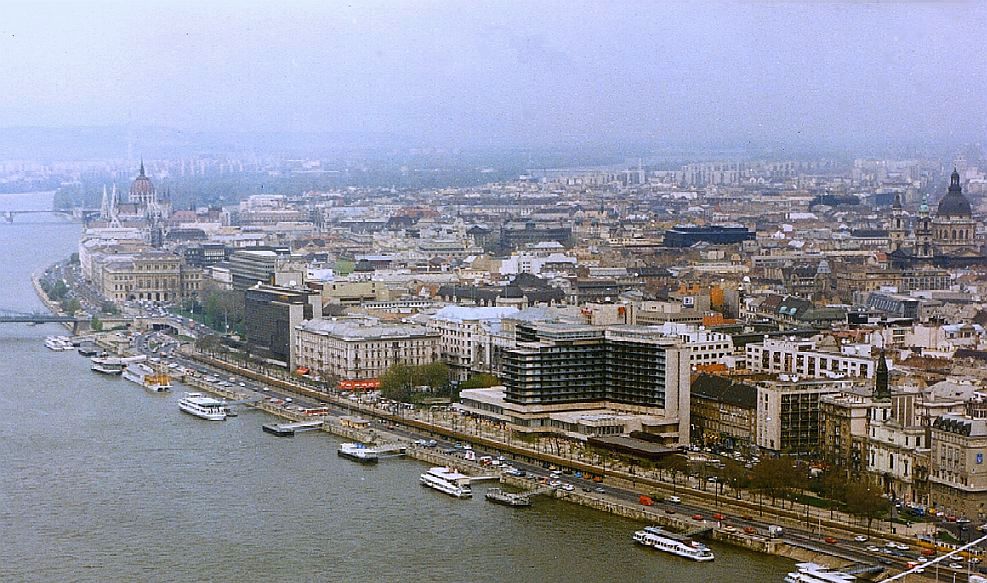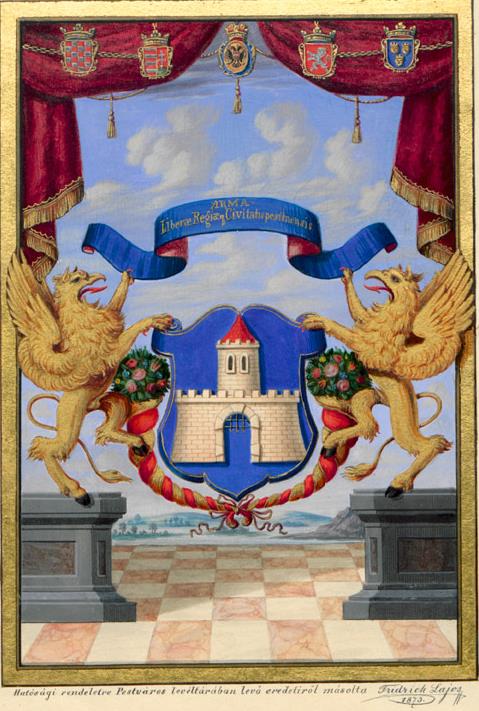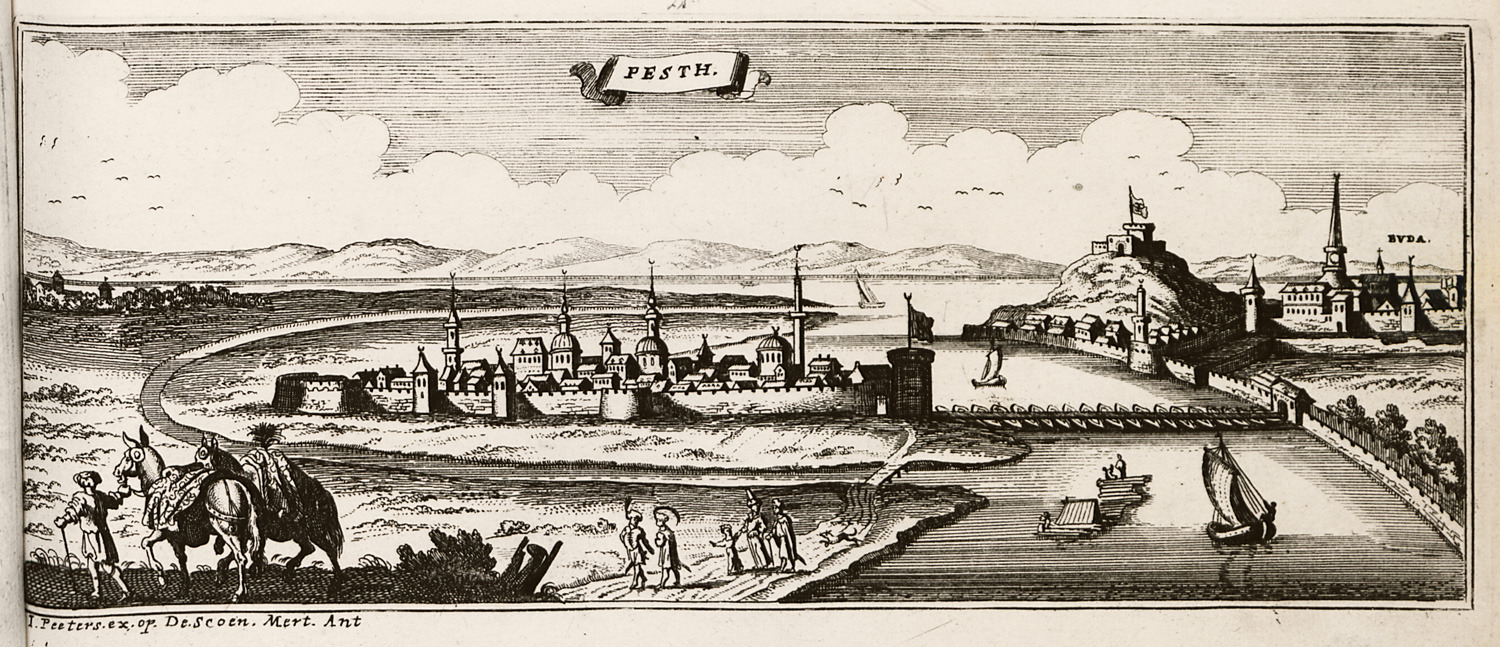Pest (city) on:
[Wikipedia]
[Google]
[Amazon]

 Pest () is the eastern, mostly flat part of
Pest () is the eastern, mostly flat part of


 Pest was originally founded as a
Pest was originally founded as a  In 1838 Pest was flooded by the Danube; parts of the city were under as much as eight feet of water, and the flood destroyed or seriously damaged three-fourths of the city’s buildings. In 1849 the first suspension bridge, the Széchenyi Chain Bridge, was constructed across the Danube connecting Pest with
In 1838 Pest was flooded by the Danube; parts of the city were under as much as eight feet of water, and the flood destroyed or seriously damaged three-fourths of the city’s buildings. In 1849 the first suspension bridge, the Széchenyi Chain Bridge, was constructed across the Danube connecting Pest with

 Pest () is the eastern, mostly flat part of
Pest () is the eastern, mostly flat part of Budapest
Budapest (, ; ) is the capital and most populous city of Hungary. It is the ninth-largest city in the European Union by population within city limits and the second-largest city on the Danube river; the city has an estimated population o ...
, Hungary, comprising about two-thirds of the city's territory. It is separated from Buda
Buda (; german: Ofen, sh-Latn-Cyrl, separator=" / ", Budim, Будим, Czech and sk, Budín, tr, Budin) was the historic capital of the Kingdom of Hungary and since 1873 has been the western part of the Hungarian capital Budapest, on the ...
and Óbuda, the western parts of Budapest, by the Danube River. Among its most notable sights are the Inner City, the Hungarian Parliament Building, Heroes' Square and Andrássy Avenue.
In colloquial Hungarian, "Pest" is often used for the whole capital
Capital may refer to:
Common uses
* Capital city, a municipality of primary status
** List of national capital cities
* Capital letter, an upper-case letter Economics and social sciences
* Capital (economics), the durable produced goods used fo ...
of Budapest. The three parts of Budapest
Budapest (, ; ) is the capital and most populous city of Hungary. It is the ninth-largest city in the European Union by population within city limits and the second-largest city on the Danube river; the city has an estimated population o ...
(Pest, Buda
Buda (; german: Ofen, sh-Latn-Cyrl, separator=" / ", Budim, Будим, Czech and sk, Budín, tr, Budin) was the historic capital of the Kingdom of Hungary and since 1873 has been the western part of the Hungarian capital Budapest, on the ...
, Óbuda) united in 1873.
Etymology
According to Ptolemy the settlement was called ''Pession'' in ancient times (Contra-Aquincum
Pest () is the eastern, mostly flat part of Budapest, Hungary, comprising about two-thirds of the city's territory. It is separated from Buda and Óbuda, the western parts of Budapest, by the Danube River. Among its most notable sights are the ...
). Alternatively, the name ''Pest'' may have come from a Slavic word meaning "furnace", "oven" (Bulgarian ; Serbian /''peć''; Croatian ''peć''), related to the word (meaning "cave"), probably with reference to a local cave where fire burned. The spelling ''Pesth'' was occasionally used in English, even as late as the early 20th century, although it is now considered archaic.
History
 Pest was originally founded as a
Pest was originally founded as a Celt
The Celts (, see pronunciation for different usages) or Celtic peoples () are. "CELTS location: Greater Europe time period: Second millennium B.C.E. to present ancestry: Celtic a collection of Indo-European peoples. "The Celts, an ancient ...
ic settlement, then a fortified camp established by the Romans
Roman or Romans most often refers to:
* Rome, the capital city of Italy
* Ancient Rome, Roman civilization from 8th century BC to 5th century AD
* Roman people, the people of ancient Rome
*''Epistle to the Romans'', shortened to ''Romans'', a let ...
(Contra-Aquincum) across the river from their military border camp at Aquincum
Aquincum (, ) was an ancient city, situated on the northeastern borders of the province of Pannonia within the Roman Empire. The ruins of the city can be found today in Budapest, the capital city of Hungary. It is believed that Marcus Aurelius w ...
. Remains of the original Roman camp can still be seen at Március 15. tér.
During the Middle Ages, Pest was an independent city separate from Buda/Ofen, which became an important economic center during the 11th–13th centuries. The first written mention dates back to 1148.
Pest was destroyed in 1241 Mongol invasion of Hungary, but was rebuilt shortly thereafter.
Demographically, in the 15th century Pest was mostly Hungarian, while Buda across the Danube had a German-majority population.
 In 1838 Pest was flooded by the Danube; parts of the city were under as much as eight feet of water, and the flood destroyed or seriously damaged three-fourths of the city’s buildings. In 1849 the first suspension bridge, the Széchenyi Chain Bridge, was constructed across the Danube connecting Pest with
In 1838 Pest was flooded by the Danube; parts of the city were under as much as eight feet of water, and the flood destroyed or seriously damaged three-fourths of the city’s buildings. In 1849 the first suspension bridge, the Széchenyi Chain Bridge, was constructed across the Danube connecting Pest with Buda
Buda (; german: Ofen, sh-Latn-Cyrl, separator=" / ", Budim, Будим, Czech and sk, Budín, tr, Budin) was the historic capital of the Kingdom of Hungary and since 1873 has been the western part of the Hungarian capital Budapest, on the ...
. Subsequently, in 1873, the two cities were unified with Óbuda to become Budapest
Budapest (, ; ) is the capital and most populous city of Hungary. It is the ninth-largest city in the European Union by population within city limits and the second-largest city on the Danube river; the city has an estimated population o ...
.
Notable people
*László Teleki
Count László Teleki IV de Szék (11 February 1811 – 8 May 1861) was a Hungarian writer and statesman. He is remembered as the author of the drama ''Kegyencz'' ("The Favourite", 1841). In older books in English he is given the name "Ladisla ...
(1811–1861), writer, statesman and magician
* Henrik Weber (1818–1866), painter
* Theodor Herzl (1860–1904), founder of the political Zionist movement
* Harry Houdini (1874–1926), illusionist, escape acts performer
See also
*Budapest
Budapest (, ; ) is the capital and most populous city of Hungary. It is the ninth-largest city in the European Union by population within city limits and the second-largest city on the Danube river; the city has an estimated population o ...
* Inner City (Budapest)
__NOTOC__
Inner City ( hu, Belváros; german: Innenstadt) the central part of Budapest. It is more or less equivalent with the historic old town of Pest.
Location
The Inner City is situated on the left bank of the river Danube. Until 1949 it wa ...
* Pest County
* Újpest
Újpest (; german: Neu-Pest, en, New Pest) is the 4th District in Budapest, Hungary. It is located on the left bank of the Danube River. The name Újpest means "New Pest" because the city was formed on the border of the city of Pest, Hungary i ...
(New Pest)
* Kispest
Kispest (lit. ''Little Pest'') is the 19th (XIX) district of Budapest, Hungary. It lies south-southeast of the historical Pest city. It was founded in 1871 on rural land as a village at the borderline of Pest, so it was named Kispest.
Histor ...
(Little Pest)
* Pestszentlőrinc
Pestszentlőrinc is neighborhood of Pestszentlőrinc-Pestszentimre in the city of Budapest, Hungary
Hungary ( hu, Magyarország ) is a landlocked country in Central Europe. Spanning of the Carpathian Basin, it is bordered by Slovakia ...
(Saint Lawrence of Pest)
* Buda
Buda (; german: Ofen, sh-Latn-Cyrl, separator=" / ", Budim, Будим, Czech and sk, Budín, tr, Budin) was the historic capital of the Kingdom of Hungary and since 1873 has been the western part of the Hungarian capital Budapest, on the ...
* Óbuda (Old Buda)
References
Further reading
* Beksics, Gusztáv:'' Magyarosodás és magyarositás. Különös tekintettel városainkra''. Budapest, 1883External links
{{Authority control Geography of Budapest